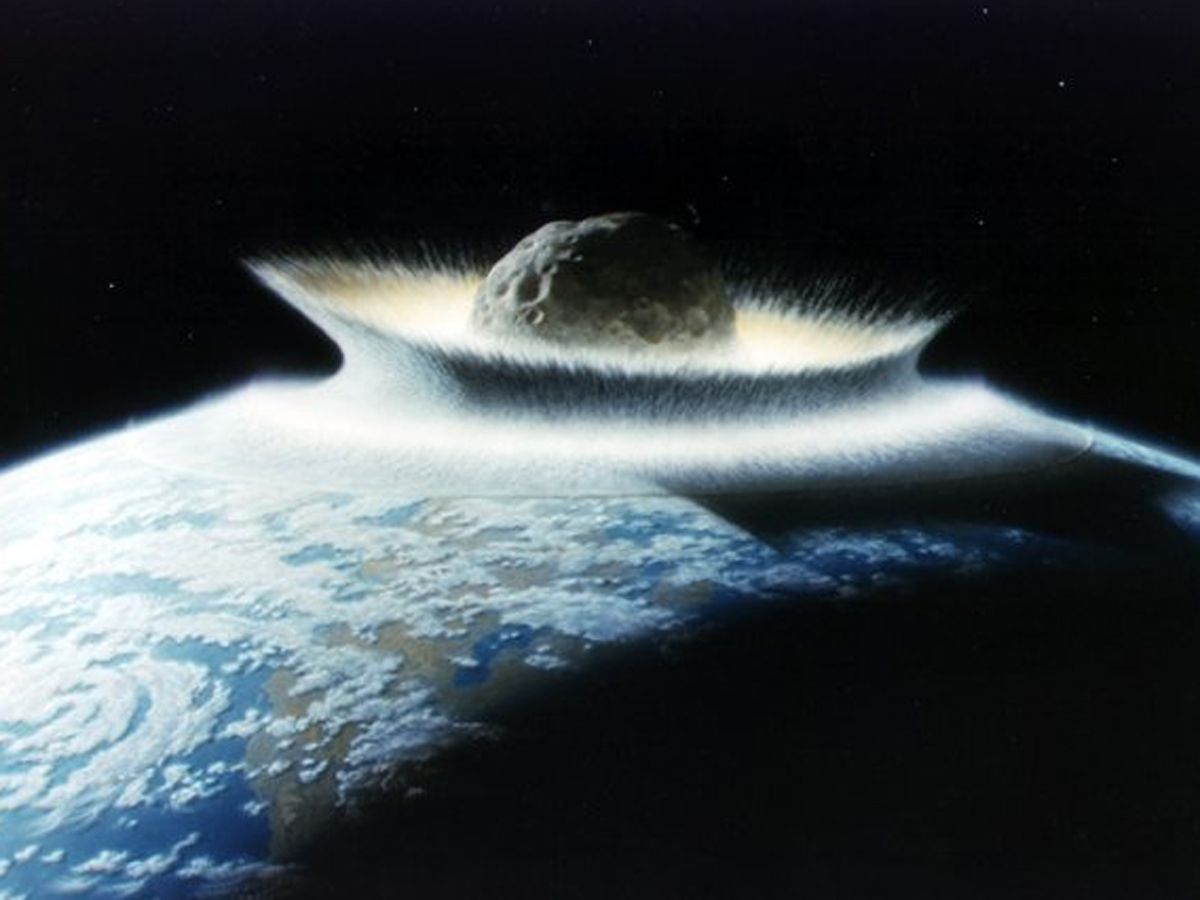
Updated | Ever wondered what it would be like if a huge asteroid smashed into Earth? Thanks to scientists from the U.S. and U.K. you don't have to.
Impact Earth is a program that lets people simulate an asteroid collision. It was first devised over a decade ago by researchers from Purdue University, Indiana, and Imperial College London, U.K. At present, the team behind it is working on an update to the program that coincides with Asteroid Day, an annual event held on June 30 to raise awareness of the risks asteroids pose to Earth.
Imperial's Gareth Collins, one of the team behind the program, studies impact scenarios. He said that when they first launched their program, they were hugely surprised at the response it got: "We had messages of appreciation and questions from school kids to distinguished scientists, which was wonderful," he tells Newsweek.
The latest version can be accessed here. The damage map allows people to choose the size of the asteroid, the speed it is traveling, the angle at which it hits and the density of the material it is composed of, letting people see the damage done more accurately.
"We are currently developing a new version of the calculator that will allow users to locate their impact anywhere on Earth and overlay estimates of the damage zones over a map," Collins says. "We have also incorporated recent research and insight from the Chelyabinsk fireball that hit Russia in 2013. This has improved the accuracy of the calculator for small, high-altitude airbursts, such as Chelyabinsk."
Impact, he says, is one of the most important processes in the solar system. It is how planets are built up from specks of dust and shapes their eventual surfaces. It also causes mass extinctions—and threatens the survival of mankind.
"The biggest known impacts on Earth are the three craters Chicxulub, Mexico; Sudbury, Canada; and Vredefort, South Africa, which were all approximately 200km (124 miles) in diameter when they formed by asteroids perhaps 10-20 km (6-12 miles) in diameter," Collins says. "Based on our knowledge of the moon's craters, Earth must have experienced larger impacts in its history, but the craters are either no longer preserved or we have not recognized them."
He says impacts like Chicxulub, which is believed to have played a role in the mass extinction event that wiped out the dinosaurs, are very rare. Current estimates suggest that such events only take place once every 100 million years—the Chicxulub asteroid hit approximately 66 million years ago, so we are not due a big asteroid strike yet.
Near Earth object (NEO) monitoring is now pretty advanced, too. NASA is currently working to identify 90 percent of the NEOs larger than 140 meters (460 feet) in size. Of the estimated 20,000 out there, we currently know about a third of them.
"Thanks to dedicated astronomical searches for large asteroids, the orbits of almost all asteroids of this scale [Chicxulub] are known and will not intersect Earth any time soon," Collins says. "So we can be confident that an Armageddon scenario is not on the horizon.
"The more likely—but still very improbable—threat is that posed by a small asteroid, perhaps 50 meters (164 feet) across. Such objects disrupt very energetically in the atmosphere, causing a bright 'fireball' and a strong airblast wave that can cause damage on the ground." Airburst refers to the explosive energy released as the asteroid tears through the atmosphere.
"Two notable airbursts in recent history are the Tunguska event of 1908, in Siberia, and the 2013 Chelyabinsk fireball, also in Russia," he continues.

"These events occur much more often than the Armageddon scenario, on a century to millennium timescale, but are highly localized in their effects. If we were unfortunate enough for such an impact to occur over a populated area, the damage would be substantial: but the overwhelming probability is that the next such event will happen in a remote, unpopulated part of the planet and affect no one," he says.
What damage is done depends very much on the size of the asteroid and the speed it is traveling. However, other factors, such as density, strength and trajectory, also play an important role because this will in part determine the airburst.
"An airburst close to the ground is many times more destructive than one at high altitude," Collins says. "For this reason and others it is imperative that we learn more about the strength and internal structure of small asteroids, through observations and spacecraft missions."
In terms of best/worst case scenarios, he said the ideal small asteroid collision would be where the airburst happened in the middle of nowhere, with the worst taking place over a largely populated area like London or Los Angeles. But what about a huge asteroid? "One can always imagine a case worse than the worst case," he says, "but a repeat of the Chicxulub impact is about as bad as it gets—in such an event, there is no best case, in terms of where it might occur, because the effects would be global."
This story has been updated to include the latest version of the asteroid simulator.
Uncommon Knowledge
Newsweek is committed to challenging conventional wisdom and finding connections in the search for common ground.
Newsweek is committed to challenging conventional wisdom and finding connections in the search for common ground.
About the writer
Hannah Osborne is Nesweek's Science Editor, based in London, UK. Hannah joined Newsweek in 2017 from IBTimes UK. She is ... Read more
To read how Newsweek uses AI as a newsroom tool, Click here.








